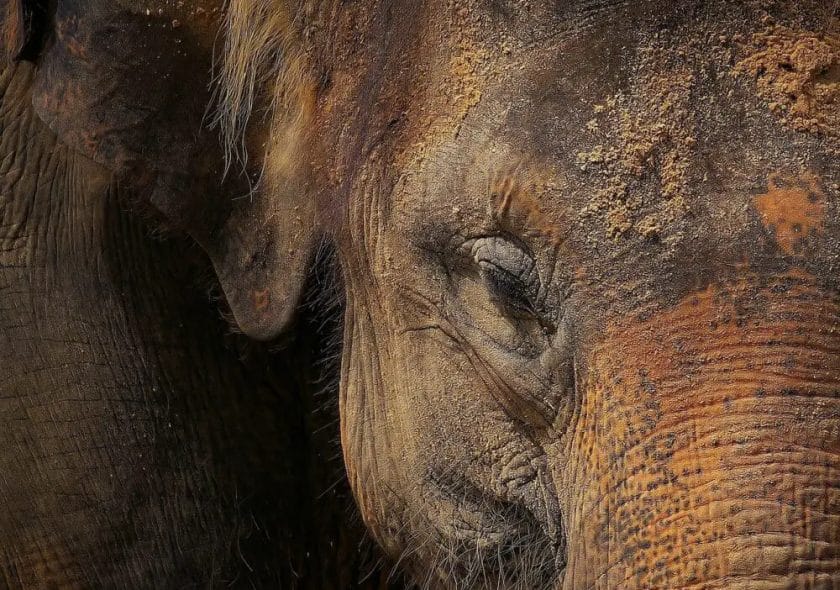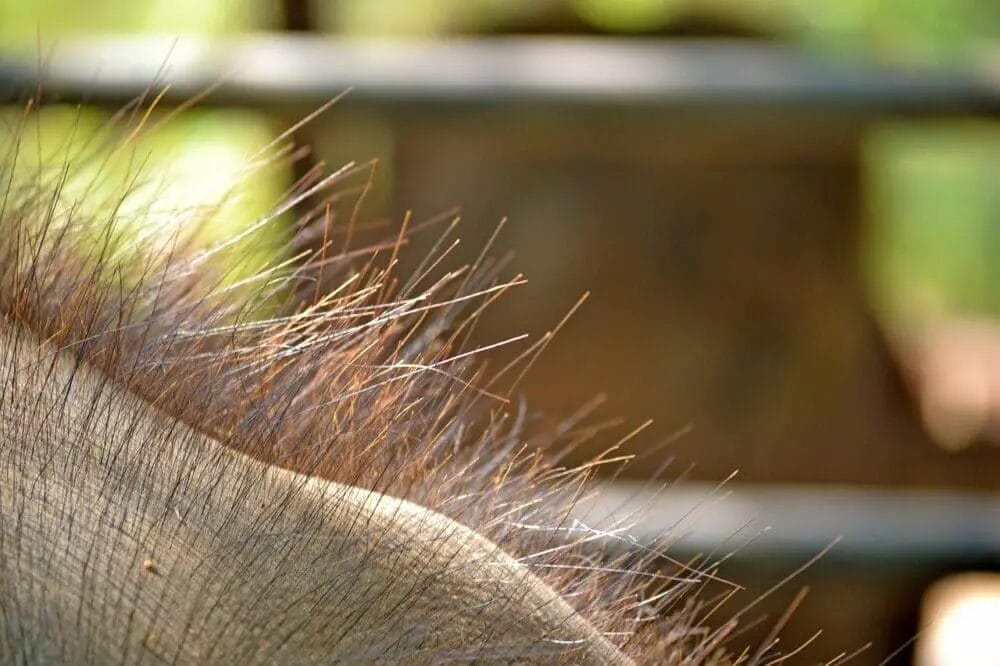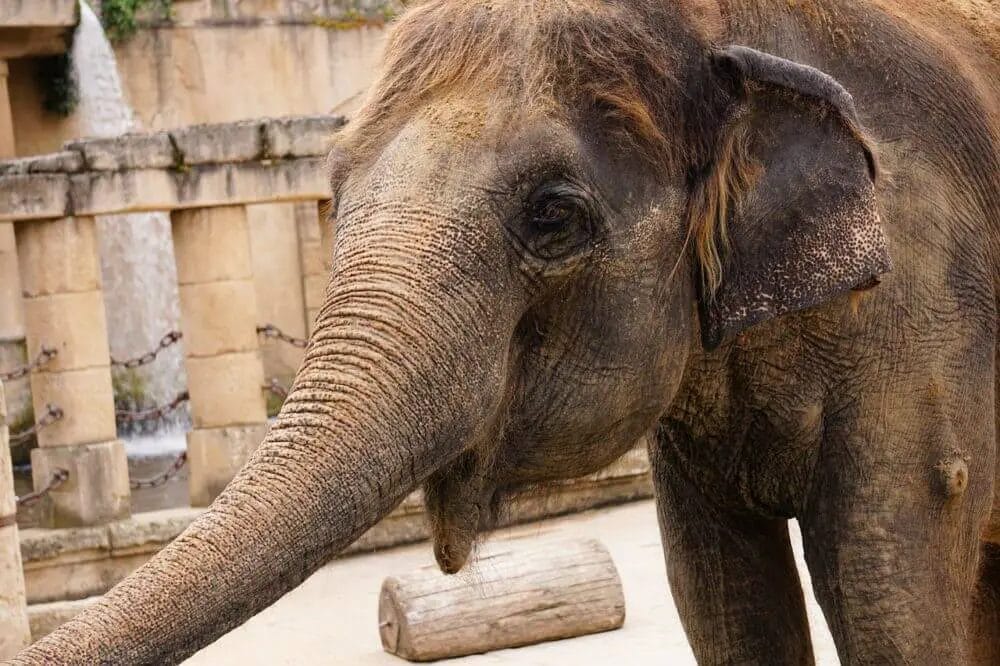Elephants are majestic creatures known for their large size, wrinkled skin, and long trunks. These gentle giants are native to Africa and Asia, and they are the largest land animals in the world.
While many people are familiar with the physical characteristics of elephants, one question that often arises is whether or not these animals have hair. In this article, we will explore the anatomy of an elephant’s skin and the function of hair in elephants, as well as the role of hair in elephant behavior.

The anatomy of an elephant’s skin
Elephants have thick, gray skin that ranges in thickness from about 1.5 centimeters on the face to about 3.8 centimeters on the back. This thick skin serves as a barrier to protect the animal from the elements, including the sun, heat, and cold.
Additionally, the skin is tough enough to protect the elephant from cuts and scrapes, and it is also able to resist insect bites and parasites.
One of the most striking features of an elephant’s skin is its many wrinkles. These wrinkles are thought to help the animal stay cool by increasing the surface area of the skin, allowing more heat to be dissipated.
The wrinkles also help to keep the skin moisturized, which is important in hot, dry climates.
While the skin of elephants is thick and tough, it is also covered with hair follicles. However, the amount of hair on an elephant is minimal compared to other mammals.
Adult elephants have only a few sparse tufts of hair on their head, ears, tail, and trunk. Baby elephants, on the other hand, are born with a thin layer of hair all over their body, which falls off within a few weeks.

The function of hair in elephants
The limited amount of hair on an elephant may seem unusual, but it is not entirely unique. Other animals, such as rhinoceroses and hippopotamuses, also have minimal amounts of hair.
One theory is that the sparse hair on elephants may be an adaptation to the hot, dry climates in which they live. In such environments, having less hair would allow for greater heat dissipation and reduce the risk of overheating.
Another theory is that the minimal amount of hair on elephants is an adaptation to their herbivorous diet.
Elephants feed on tough, fibrous vegetation that can be difficult to digest. Having a reduced amount of hair would make it easier for them to eat and digest their food without getting hair in their mouth.
In comparison, other mammals such as horses, dogs, and cats have a great deal of hair on their body which help them to stay warm, camouflage, and to attract mates.
The role of hair in elephant behavior
Despite the limited amount of hair on elephants, it still plays a role in the animals’ social interactions.
Elephants will often use their sparse tufts of hair to rub against one another, a behavior known as “social grooming.” This helps to maintain social bonds and build trust among members of the herd.
Additionally, elephants use their trunks and other body parts for grooming instead of hair. Elephants will use their trunks to dust off dirt, remove parasites, and clean their skin.
They will also use their feet to scratch hard-to-reach areas. This is why the elephant’s skin is always in a good condition, and the tufts of hair are always clean.

Conclusion
In conclusion, elephants do have hair, but it is present in minimal amounts compared to other mammals. The limited amount of hair on elephants may be an adaptation to the hot, dry climates in which they live or to their herbivorous diet.
Despite the minimal amount of hair, it still plays a role in social interactions among elephants, and the animals use their trunks and other body parts for grooming instead of hair.
Understanding the unique characteristics of elephant anatomy and behavior related to the presence of hair gives us insight into the life of these fascinating creatures and their adaptation to the wild.
For readers who want to learn more about elephants, their biology, and their behavior, there are many resources available, including books, documentaries, and websites.
Additionally, visiting zoos or wildlife sanctuaries can provide a firsthand look at these magnificent animals and help to deepen our understanding and appreciation of them.
Are baby elephants born with more hair than adult elephants?
Yes, baby elephants are born with a thin layer of hair all over their body, which falls off within a few weeks. Adult elephants have only a few sparse tufts of hair on their head, ears, tail, and trunk.
Are there any other animals that have minimal amounts of hair like elephants?
Yes, other animals such as rhinoceroses and hippopotamuses also have minimal amounts of hair.
Do elephants use their hair for camouflage?
No, elephants use their limited hair for social interactions such as rubbing against one another and not for camouflage. The minimal amount of hair present on elephants may not be sufficient for camouflage purposes.
Do elephants have hair on their trunk?
Yes, elephants have hair on their trunk, but it is minimal compared to other parts of their body.
Can elephants use their hair to stay warm?
No, the minimal amount of hair present on elephants may not be sufficient to keep them warm.
Elephants have thick, gray skin that ranges in thickness from about 1.5 centimeters on the face to about 3.8 centimeters on the back to protect them from the cold. Additionally, they have wrinkles on their skin that help them to stay cool.
